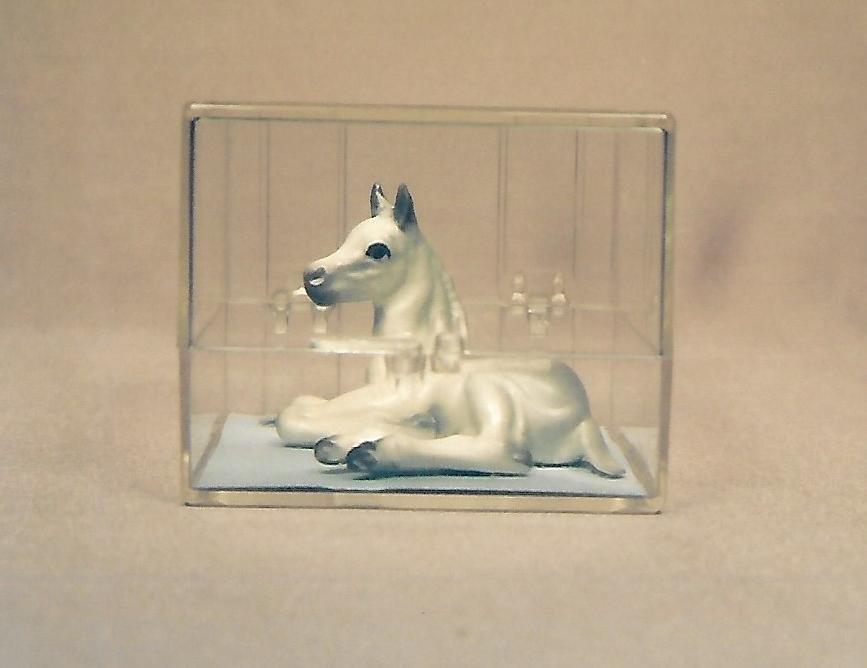
About Boxed Miniature Sets
Boxed Miniature Sets were introduced in Fall 1959. Two to four Miniatures from the current line were glued together on a single card, which was then itself glued into a small hinged plastic box. The cards were the same standard cards used for single pieces, and the Miniatures were affixed either to the printed side (usual in San Dimas) or to the blank side (common in Monrovia).
Over the next three seasons, more sets were added, for a total of 33 different sets. The final season was Spring 1961. All of these sets are mounted to cards marked Monrovia.
Boxed Miniatures reappeared for a single season in San Dimas. Although the San Dimas order form is not dated, internal evidence—the date at which all the Miniatures being used in the sets were being produced simultaneously–indicates that it must have been Fall 1978. Longtime collector Nancy Falzone confirmed that she wrote this date on her own copy of the order form when she acquired it shortly after the sets were released.
The 33 Monrovia sets were identified by letters of the alphabet, as “Set A,” “Set B,” and so forth. After reaching Z, the names began again with AA, BB, etc. Note that the letters I and V were not used. The 40 San Dimas sets were only identified by the item number of one of the pieces in the set; for instance, the set comprising a Dachshund adult and pup was #347.
The colorways of Miniatures in boxed sets may vary, but I have not seen colorways in boxed sets that differ from the pieces available individually during the same production year. Some combinations of Miniatures were produced both in Monrovia and San Dimas (e.g. Siamese kittens and Spilled Milk; Pelicans; Mice and Cheese) but of course these are easy to distinguish by the factory location printed on the cards.
A very few Special Runs have also been sold in boxes, and the dates of these vary. The Arab foal shown here may have been a small Special Run, or it may have just been placed in the box for safekeeping.
All Boxed Miniatures sets are hard to find, mainly because of their very short production dates, but also because owners tended to remove the pieces from the boxes.